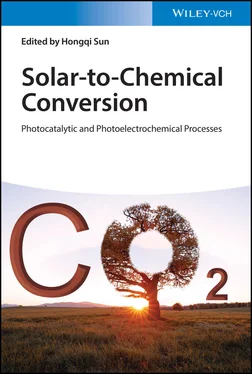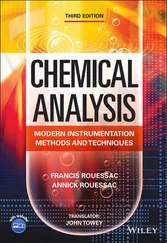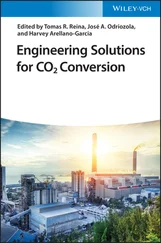1 ...7 8 9 11 12 13 ...32 Chapter 8: Photocatalytic and Photoelectrochemical Overall Water Splitting. After the discussions of the individual hydrogen or oxygen evolution processes, this chapter focuses on the overall water splitting processes. The fundamental scientific requisites, mechanism aspects, and development horizons for overall water splitting are comprehensively covered. Then the development of photocatalytic technologies and hybrid systems integrating photovoltaic devices and photoelectrodes in photoelectrochemical platforms for overall water splitting are introduced. An extensive library of light‐responsive semiconductor‐based materials, attractive cocatalysts, and plasmonic nanostructures and assessed synthesis approaches, e.g. the construction of heterojunctions between state‐of‐the‐art semiconductors, is presented. It is expected that the development of practical and adequate materials for solar‐driven overall water splitting systems can further advance this exciting system.
Chapter 9: Photocatalytic CO 2Reduction. After hydrogen/oxygen evolutions, another main topic in solar fuels, i.e. CO 2reduction, starts in this chapter. Photocatalytic CO 2reduction has been regarded to be economical, recyclable, and safe, therefore holding a great promise for addressing worldwide energy and environmental problems. In this chapter, the whole process of photocatalytic CO 2reduction is analyzed in terms of energy and mass flow. Discussions are made to illustrate the effects of the flow of solar energy through concentrator, reactor, reaction solution, and photocatalyst and the mass flow from the adsorption and activation of reactants (such as CO 2) on the surface of the photocatalysts to the formation of CO, CH 4, and other products through photocatalytic reaction. Contributions are also made to present the energy loss and obstacles contained in the transformation processes and the possible strategies to improve the overall reaction efficiency.
Chapter 10: Photoelectrochemical CO 2Reduction. As inspired by PEC water splitting, PEC reduction of CO 2can also integrate and optimize both photocatalysis and electrocatalysis toward an improved CO 2reduction system with a higher efficiency and stability. This chapter first introduces the fundamentals and reaction parameters in the concerned systems; then research advances on the development catalyst materials are surveyed. This includes the semiconductors, cocatalysts, and hybrid semiconductors. Novel reactor systems for PEC CO 2reduction are introduced. At last, research opportunities and challenges are identified.
Chapter 11: Photocatalytic and Photoelectrochemical Nitrogen Fixation. Using solar energy to convert nitrogen in air to valuable chemicals is a direct mimicking system to natural photosynthesis. Artificial photocatalytic and PEC reduction of N 2to ammonia emerged as a fantastic venue to this end. This chapter introduces the recent advances in photocatalytic and photoelectrochemical N 2reduction to NH 3. The fundamental principles on N 2reduction are presented. Then, the current design strategies, mainly including the defect engineering, structural regulation, interface control, heterojunction construction, cocatalyst engineering, and biomimetic engineering, for the preparation of heterogeneous catalysts are summarized. At last, the remaining challenges as well as future perspectives in this very exciting research field are outlined.
Chapter 12: Photocatalytic Production of Hydrogen Peroxide Using MOF Materials. In theory, oxygen and water can be employed to produce hydrogen peroxide using solar energy, which fortunately was demonstrated to be feasible through photocatalysis. It was reported that synthesis of H 2O 2from O 2reduction reaction using metal organic frameworks (MOFs) is attractive and promising. In this chapter, the H 2O 2production through visible‐light‐induced O 2reduction by an MOF, MIL‐125‐NH 2, coupled with oxidative reaction of benzyl alcohol was achieved in a single‐phase system composed of acetonitrile and benzyl alcohol. These works creatively developed the application of MOFs in the field of new energy production.
Chapter 13: Photocatalytic and Photoelectrochemical Reforming of Methane. Solar energy can serve as the input energy for methane activation because of the wide distribution and large reserve. With that, photocatalysis and photoelectrocatalysis are recognized as effective approaches for methane reforming on which more attention has been put in the field of energy preparation. In this chapter, photocatalytic and photoelectrochemical methane reforming are introduced. The differences between these two catalytic processes are investigated in detail. After that, recent research progresses on the methane activation reactions via these two techniques are provided. The related reaction mechanisms are discussed insightfully. At last, promising perspectives on the methane upgrading via solar energy excitation are proposed.
Chapter 14: Photocatalytic and Photoelectrochemical Reforming of Biomass. It is very interesting to combine two renewable resources, e.g. solar energy and biomass, together in one process. Recently photocatalytic and photoelectrochemical reforming of biomass was demonstrated. This chapter discusses the photocatalytic conversion of processed and native lignin, carbohydrates, native lignocellulose, glycerides, and glycerol to hydrogen and value‐added chemicals. Also, the photoelectrochemical (PEC) reforming of biomass to electricity, hydrogen, and biomass‐derived molecules such as glycerol and alcohols, as well as converting 5‐hydroxymethylfurfural to corresponding valuable chemicals, is reviewed.
Chapter 15: Reactors, Fundamentals, and Engineering Aspects for Photocatalytic and Photoelectrochemical Systems. Novel catalyst materials and new reactions have always been the hotspots in the research endeavors. As the places for the ultimate step, the reactors and associated parameters should also be given attention. This chapter provides insightful discussions on the key factors for practical approach of photocatalysis and PEC in solar fuel production. In particular, (i) fundamental rationales and mechanisms, (ii) the design and setup of photoreactors, and (iii) engineering aspects of photocatalytic and PEC systems with potential scalability are provided.
Chapter 16: Prospects of Solar Fuels. By several dream reactions, solar energy can be captured and stored in terms of solar fuels. This chapter first concludes the available processes that have been demonstrated to be feasible, and then attention is paid to explore the feasibility of the processes. Tremendous efforts are required from research, commercialization, and policies to achieve the solar fuel production at a large scale.
2
Artificial Photosynthesis and Solar Fuels
Jun Ke
Wuhan Institute of Technology, School of Chemistry and Environmental Engineering, Liufang Campus, No.206, Guanggu 1st road, Donghu New & High Technology Development Zone, Wuhan, 430205, P.R. China
2.1 Introduction of Solar Fuels
In the Earth, all chemicals, in particular energy system, including fuels and their combustion products, are enclosed in a substance cycle. It is well known that fossil fuels including coal, petroleum, and natural gas mainly stem from the evolution of ancient animals and plants under the stratum for tens of thousands of years. When these fossil fuels are combusted, massive chemical energies can be converted into thermal energies, which can then be used to make liquid water vaporize for driving the electric generators to produce various available energy forms, such as electric power. Furthermore, during the combustion of fossil fuels, the intrinsic chemical reactions are oxidation of hydrocarbons, accompanying with outputs of thermal energy. Finally, the hydrocarbons and their derivatives are converted into carbon dioxide and water along with SO x, NO x, and cokes under imperfect combustion. It is known that when massive CO 2and water are released into the air, the natural plants and alga can utilize CO 2to produce hydrocarbons as own constituents and release dioxygen in the presence of sunlight and water, being defined as photosynthesis. Subsequently, these plants and alga enter food chains and finally become fossil fuels. Until now, carbon as energy carrier realizes the global cyclic process.
Читать дальше


![Евгений Матерёв - Музеи… или вдохновляющая музыка The Chemical Brothers [litres самиздат]](/books/437288/evgenij-materev-muzei-ili-vdohnovlyayuchaya-muzyka-th-thumb.webp)









